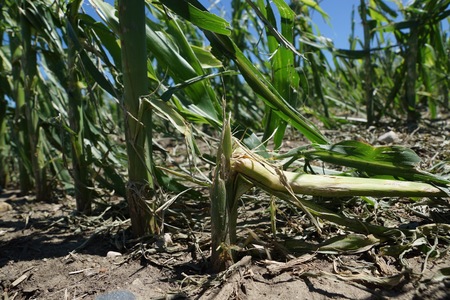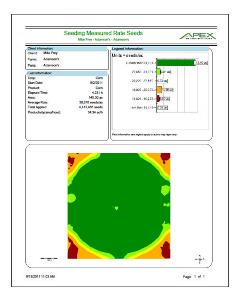Mega Menu
Mega menu is possible in BS5 but we will need to create a custom template layout for the navigation widget. The following is a hard-coded example.

Font Awesome 6
FA6+ icons will work on all widgets.
The FMH Icon box will need a new version created because the styling is broken in Bootstrap 5 templates (this has nothing to do with FA).
FMH Icon Widget
Icons can now be used in Content blocks by pasting the HTML tags from www.fontawesome.com into the HTML editor.
Here are some new icons from Font Awesome 6
face-awesome
envelopes
wheat-awn
Bootstrap Components
Code snippits from http://getbootstrap.com pasted into Content Blocks.
h1. Bootstrap heading
h2. Bootstrap heading
h3. Bootstrap heading
h4. Bootstrap heading
h5. Bootstrap heading
h6. Bootstrap heading
Nav Tabs
Nav Pills
Accordion
.accordion-body, though the transition does limit overflow.
.accordion-body, though the transition does limit overflow.
.accordion-body, though the transition does limit overflow.
Tables
| # | First | Last | Handle |
|---|---|---|---|
| 1 | Mark | Otto | @mdo |
| 2 | Jacob | Thornton | @fat |
| 3 | Larry the Bird | ||
Alerts
Image Carousel
Modals
Sitefinity Widgets
Default, out of the box, Bootstrap 5 templates available for widgets.
The navigation template used above is called Horizontal.
Navigation Widget - Tabs Template
Navigation Widget - Pills Template
Breadcrumb


List Widget - Expandable List Template
Precision Claims FAQs
List Widget - Simple List Template
Crop Claims Reminders
-
How To Report MPCI Claims
-
MPCI Claim Reporting Deadlines
-
Appraisals
-
Production Records by Unit
-
Production Delivered to a Commercial Elevator
-
Production From Precision Farming Technology Systems
-
Production Weighed and Farm Stored
-
Authorization for Load Records, Storage Structure Marking, or Combine Monitor Records
-
Fed Production
-
Quality Adjustment
-
What is a Simplified Claim?
-
What can insureds do to expedite the claim process?
List Widget - Anchor List Template
Quality Control Review FAQ
- What can an Insured do to prepare for a review?
- What can Agents do to prepare for a review?
- How does the review process begin?
Quality Control Review FAQ
What can an Insured do to prepare for a review?
Third party documentation (i.e. summary/settlement sheets from the elevator) is required when applicable and available. Insureds are expected to have available hard copy records that will 1) support the total production raised for the crop/county/year being reviewed and 2) that can demonstrate how production was kept separate between various units, practices and types (if applicable).
Insureds will also want make themselves available to meet with the quality control reviewer as the reviews will need to be completed before the claims can be processed.
What can Agents do to prepare for a review?
How does the review process begin?
Documents List - Documents List Template
Documents List - Documents List Template
| Title | Type | Size | |
| 602 KB | DownloadFMHQ Release 2 Guide | ||
| 405 KB | DownloadWFRP Checklist for Agents 2026 | ||
| 504 KB | DownloadWFRP Policy Provisions 2026 | ||
| 3231 KB | DownloadWFRP Handbook 2026 | ||
| 203 KB | DownloadECO_MCO_SCO_Coverage Comparison Flyer |
News Widget - News List Template
News list template is the only template available by default.
USDA Provides One-Time Extension of Deadline to Update Base Acres or Yield History for ARC/PLC Programs
Farmers Now Have Until March 31 to Update Yields and Reallocate Base Acres; Deadline for Choosing Between ARC and PLC also Remains March 31
 WASHINGTON, Feb. 27, 2015 — Agriculture Secretary Tom Vilsack announced today that a one-time extension will be provided to producers for the new safety-net programs established by the 2014 Farm Bill, known as Agriculture Risk Coverage (ARC) and Price Loss Coverage (PLC). The final day to update yield history or reallocate base acres has been extended one additional month, from Feb. 27, 2015 until March 31, 2015. The final day for farm owners and producers to choose ARC or PLC coverage also remains March 31, 2015.
WASHINGTON, Feb. 27, 2015 — Agriculture Secretary Tom Vilsack announced today that a one-time extension will be provided to producers for the new safety-net programs established by the 2014 Farm Bill, known as Agriculture Risk Coverage (ARC) and Price Loss Coverage (PLC). The final day to update yield history or reallocate base acres has been extended one additional month, from Feb. 27, 2015 until March 31, 2015. The final day for farm owners and producers to choose ARC or PLC coverage also remains March 31, 2015.
"This is an important decision for producers, because these programs provide financial protection against unexpected changes in the marketplace. Producers are working to make the best decision they can. And we're working to ensure that they've got the time, the information, and the opportunities to have those final conversations, review their data, and to visit the Farm Service Agency to make those decisions," said Vilsack.
If no changes are made to yield history or base acres by March 31, 2015, the farm's current yield and base will be used. A program choice of ARC or PLC coverage also must be made by March 31, 2015, or there will be no 2014 payments for the farm and the farm will default to PLC coverage through the 2018 crop year.
"These are complex decisions, which is why we launched a strong education and outreach campaign back in September. Now we're providing a one-time extension of an additional month so that every producer is fully prepared to enroll in this program," said Vilsack.
Nationwide, more than 2.9 million educational postcards, in English and Spanish, have been sent to producers, and over 4,100 training sessions have been conducted on the new safety-net programs. The online tools, available at www.fsa.usda.gov/arc-plc, allow producers to explore projections on how ARC or PLC coverage will affect their operation under possible future scenarios.
Covered commodities include barley, canola, large and small chickpeas, corn, crambe, flaxseed, grain sorghum, lentils, mustard seed, oats, peanuts, dry peas, rapeseed, long grain rice, medium grain rice (which includes short grain rice), safflower seed, sesame, soybeans, sunflower seed and wheat. Upland cotton is no longer a covered commodity.
To learn more, farmers can contact their local Farm Service Agency county office. To find your local office visit http://offices.usda.gov.
Blog Posts Widget - Blog Posts Lists Template
-
Reporting Acreage with FMH Precision Solutions
Many policyholders already collect precision ag data during planting. Put that data to work to report acreage for crop insurance with FMH Precision Solutions.Full story -
Prepping Your Customers for Planting with Precision
Help your farmers use the precision data they're already collecting to simplify planting and reporting this spring.Full story -
Q&A with an FMH Precision Tech Specialist
Learn how our expert staff supports agents getting started with Precision SolutionsFull story -
Traditional vs. Precision Claims: What Are the Differences?
Oct 16, 2023, 14:01 by Eric RicheLearn how Precision Solutions can lead to simplified claims and easier APH reviews for your customers.Full story -
See How Precision Solutions Saves Premium and Improves APH
See the difference with examples from our recent FieldView™ Partner Connect webinar.Full story



